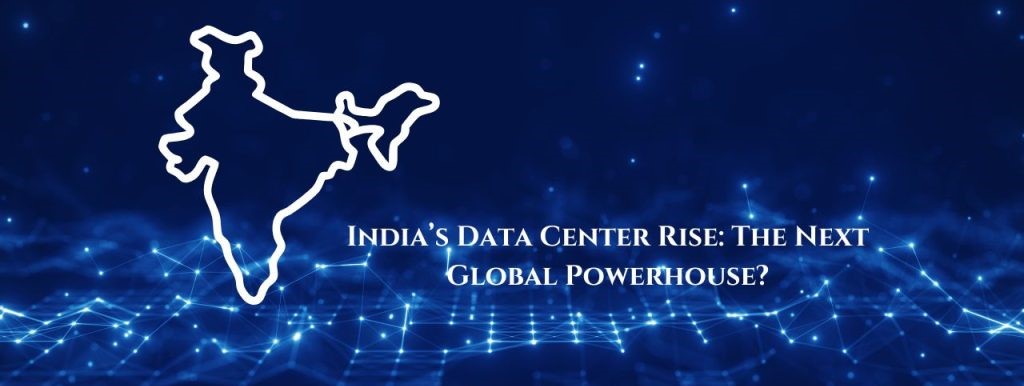long-distance operations, separate from the Department of Telecommunications’ responsibilities. In 1995, VSNL played a key role in launching the first publicly available internet service in India.
The first VSNL (now STT, erstwhile Tata Communications) internet centres in India were launched in five cities on August 15, 1995: Delhi, Mumbai, Kolkata, Chennai and Pune. These cities were the first to have public access to the internet through VSNL’s Gateway Internet Access Service.
Sify (through their data centre subsidiary, Sify Infinit Services Limited), which launched India’s first private ISP in 1998, boasts a significant history in the Indian data centre industry, starting with India’s first commercial data centre in Vashi, Mumbai, to having a network of 14 data centres across the country. Sify launched its first data centre in 2000, and has since expanded its presence with hyperscale and AI-ready facilities in Bengaluru, Chennai, Airoli, Noida, Rabale (Navi Mumbai), Hyderabad and Kolkata.
Demand-supply imbalance
India stands at a critical juncture in its digital journey, facing a significant imbalance between the burgeoning demand for data services and the available data centre infrastructure. As India continues to digitalise, understanding and addressing this gap becomes crucial for policymakers, industry professionals and investors alike.
Catalysing data demand
- 2015: The Indian government initiates the Digital India programme.
- 2016-18: Affordable data plans and smartphones lead to exponential growth in internet users, particularly in rural areas. E-governance initiatives gain traction.
- 2019-21: The Covid-19 pandemic accelerates digital adoption across sectors. Remote work, online education and e-commerce see unprecedented growth.
- 2022-present: Roll-out of 5G networks and proliferation of IoT devices further intensify data consumption.
A data-hungry ecosystem
The Indian e-commerce market, valued at $46.2 billion in 2020, is projected to reach $111.4 billion by 2025. Platforms such as Flipkart and Amazon are expanding into Tier II and Tier III cities, driving data consumption through personalised recommendations and video-based product showcases. Further, India’s OTT market was expected to reach $5 billion by 2023. Platforms such as Hotstar, broke global streaming records during IPL 2024, and Netflix’s mobile-only plans are driving video consumption to new heights. The edutech sector has also seen explosive growth, with companies such as Unacademy becoming unicorns in a very short time. Finally, UPI transactions crossed 8 billion in January 2023, marking a 100 per cent year-on-year growth. This surge, is generating massive amounts of transactional data.
India vs global data centre markets
- US: Leads the global market with over 2,700 data centres. Major hubs include Virginia, Texas and California. It deploys advanced cooling technologies and has high renewable energy usage. The average PUE is 1.3-1.5.
- China: A rapidly growing market with over 450 data centres. In China, the focus is on AI and cloud services. The major players include Alibaba Cloud and Tencent Cloud. Strict data localisation laws are followed.
- India: An emerging market with high growth potential, it has around 153 data centres with a total operational capacity of up to 870 MW as of December 2023. In the last one year, over 400 MW of capacity was added. Future planned supply (third-party data centres) includes 45 data centres with a total capacity of 1,015 MW over the next three years.
- Singapore: With over 60 data centres, Singapore is known for connectivity and business-friendly policies. Space constraints led to a temporary moratorium on new data centres, which was lifted.
Challenges in bridging the gap
India’s power grid faces reliability issues, with frequent outages in some regions. The shift towards renewable energy sources presents both opportunities and challenges in grid stability. Proximity to power sources and network infrastructure is crucial, limiting viable locations. Complex regulations and multiple clearances often delay projects. Thirdly, while major cities have good connectivity, many Tier II and Tier III cities lack robust fibre optic networks. Lastly, there’s a significant shortage of skilled professionals in data centre operations, cybersecurity and cloud technologies.
Conclusion
India’s data centre industry is experiencing rapid growth. The proliferation of IoT devices and 5G networks will drive the deployment of edge data centres. Future data centres in India will increasingly focus on sustainability. Adoption of renewable energy sources, advanced cooling technologies such as liquid immersion cooling and AI-driven energy management systems will become standard.
To address the skill gap, industry-academia partnerships will intensify. Virtual reality-based training programmes, apprenticeship schemes and specialised data centre management courses will emerge, creating a robust talent pipeline.


